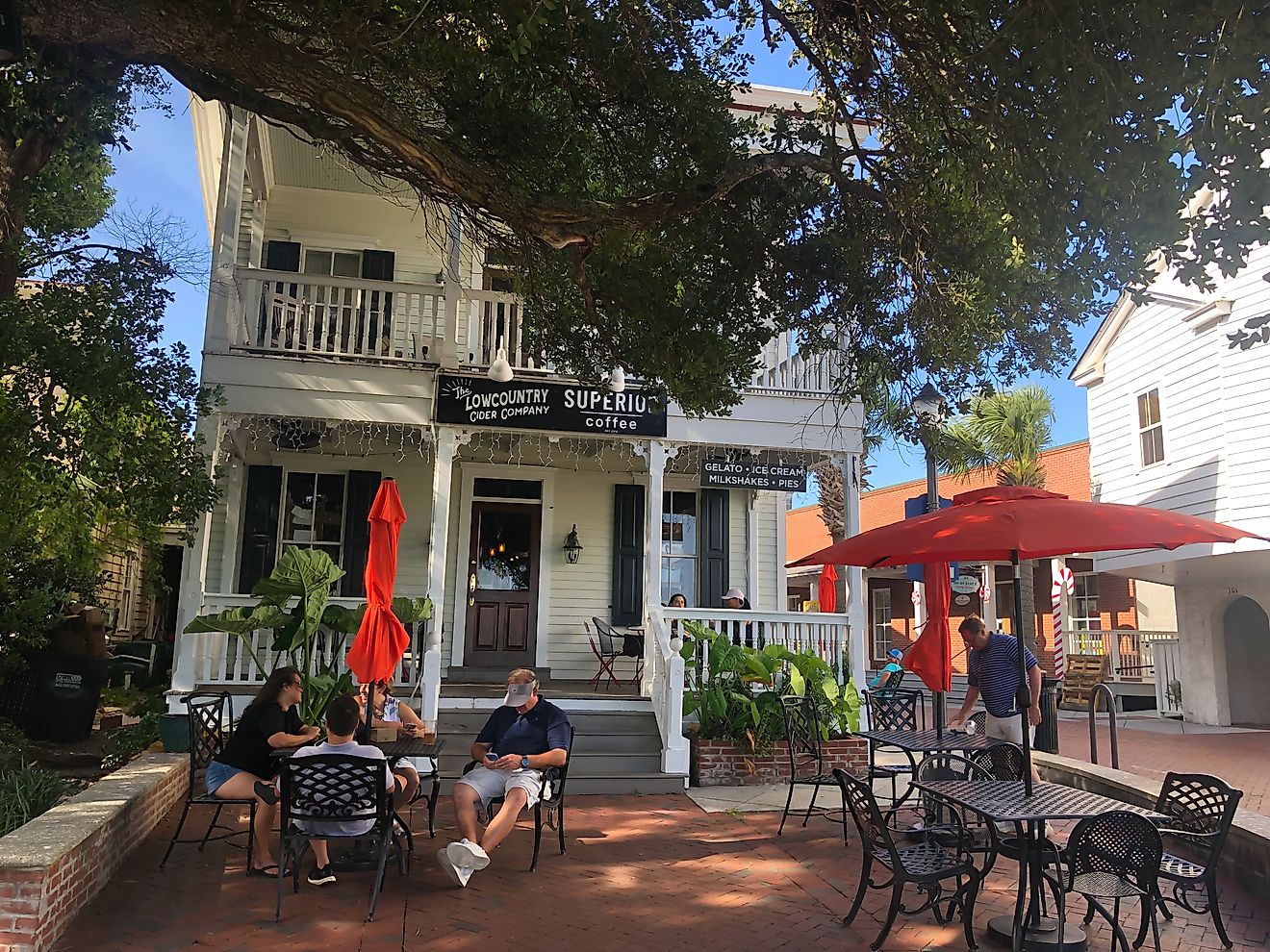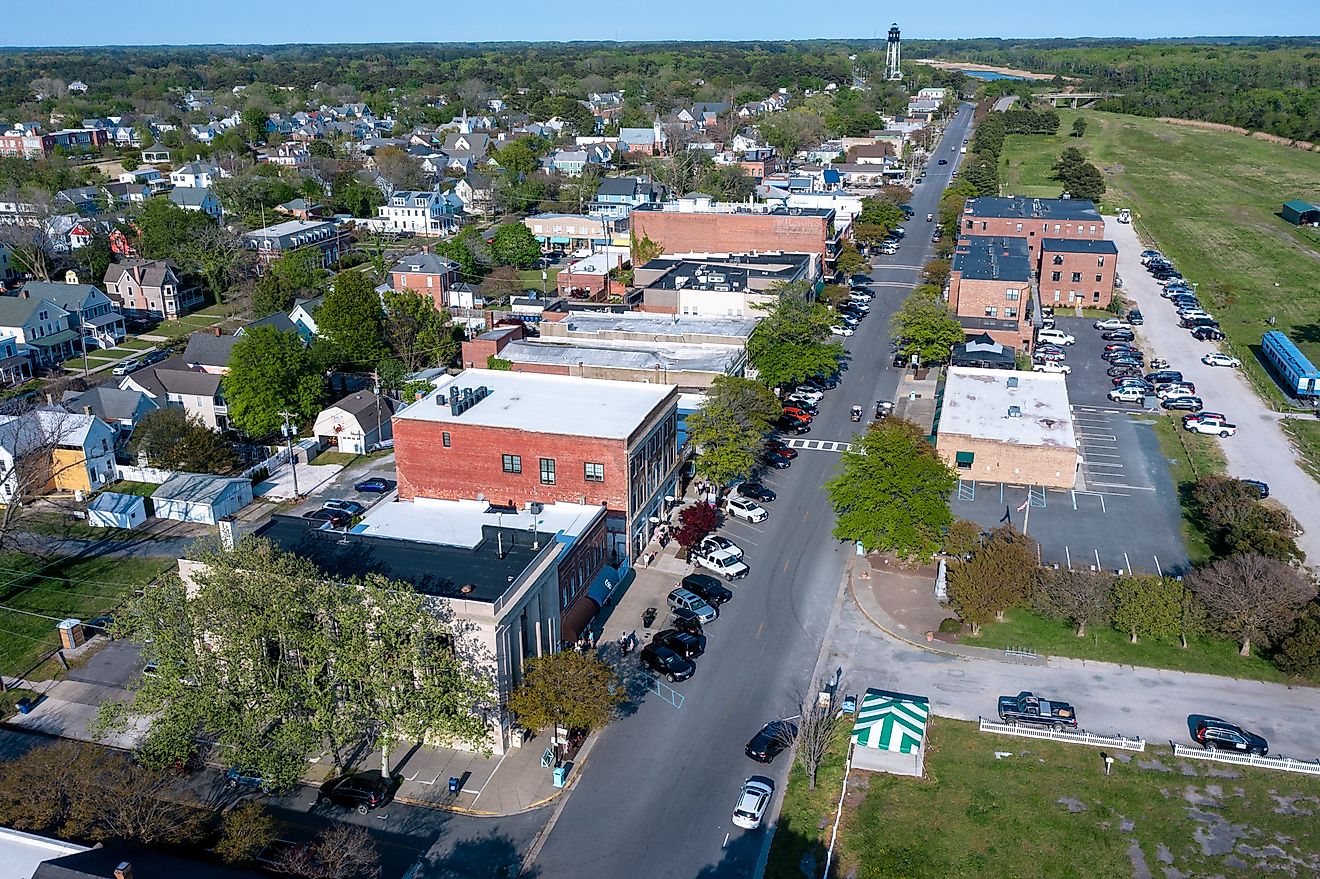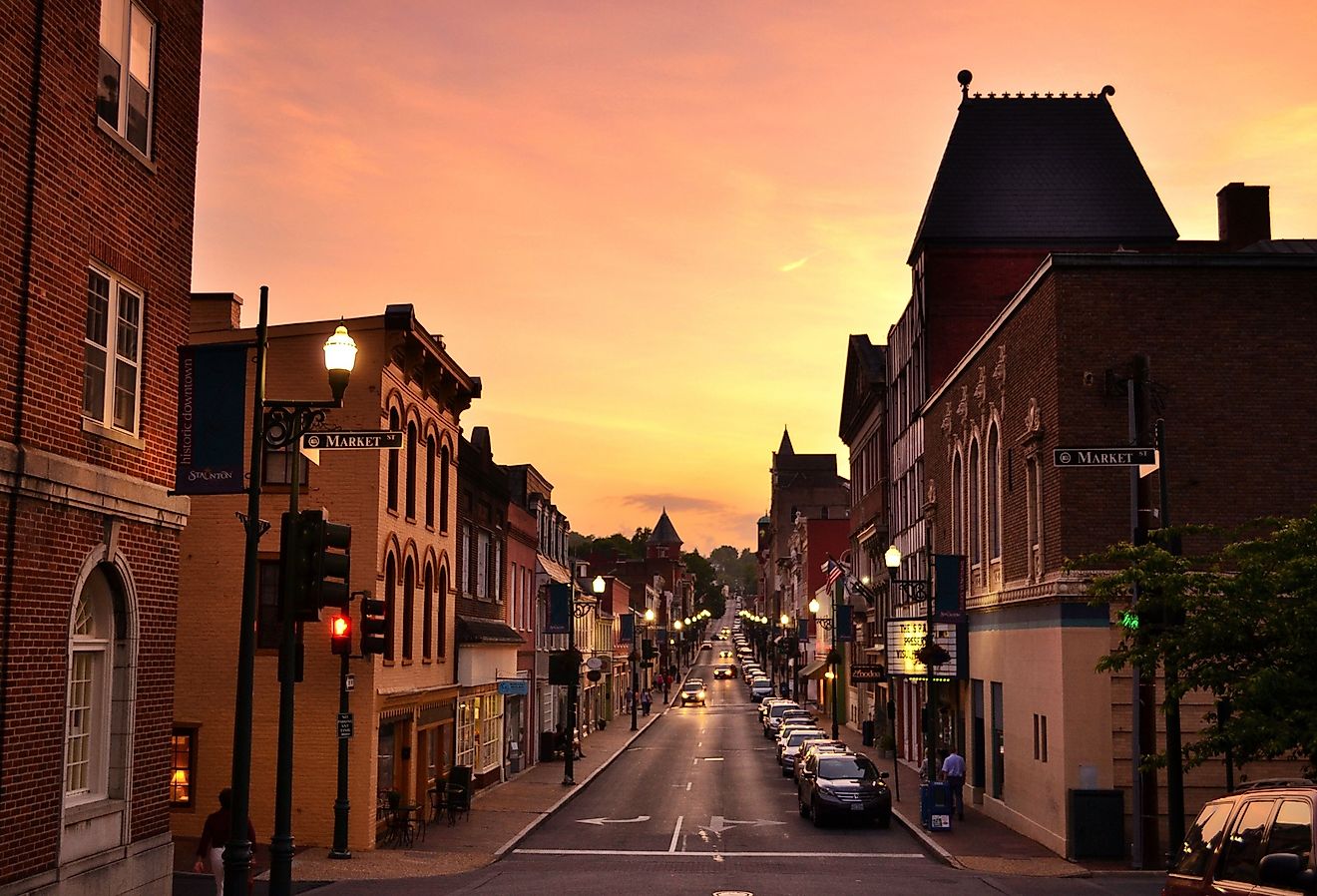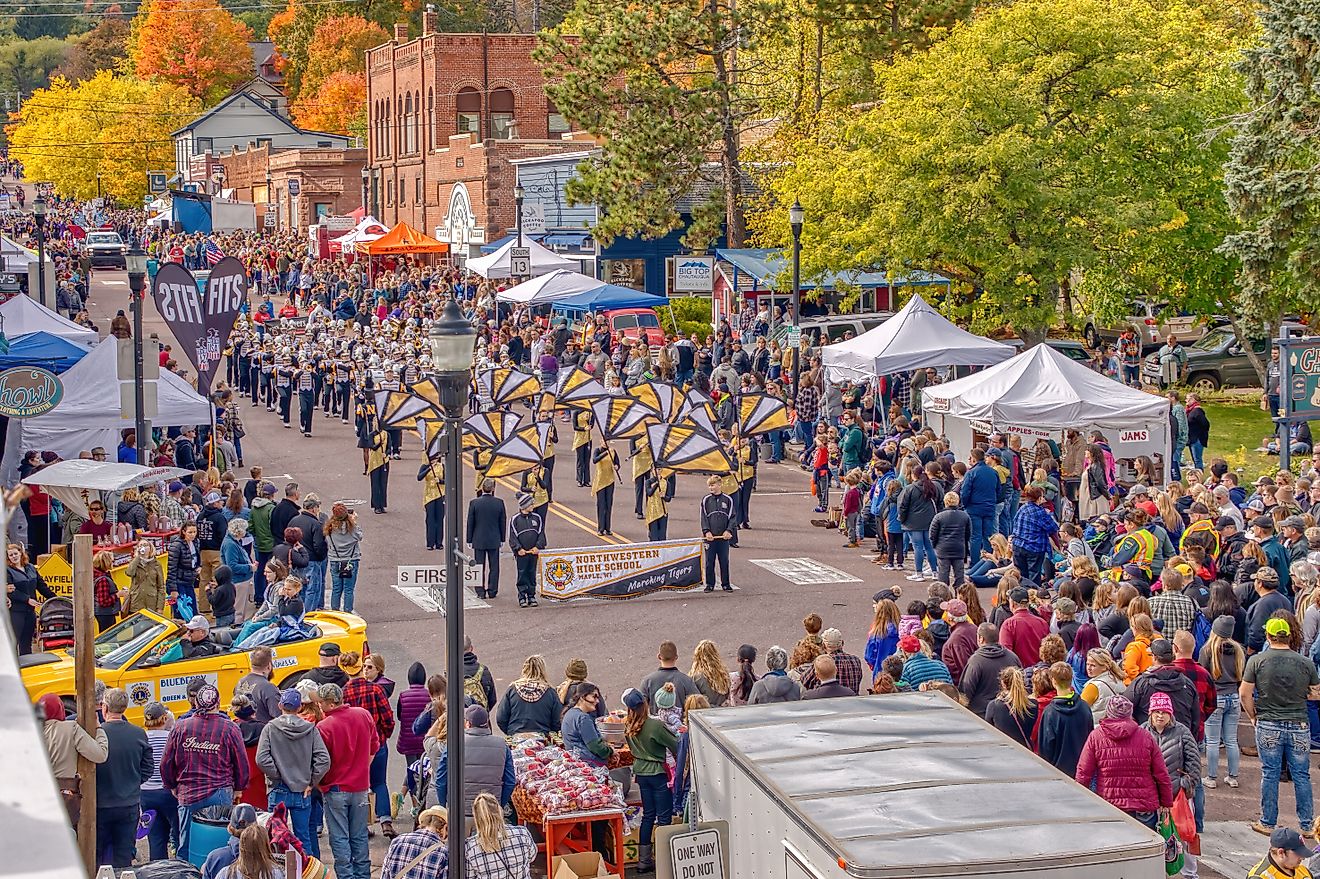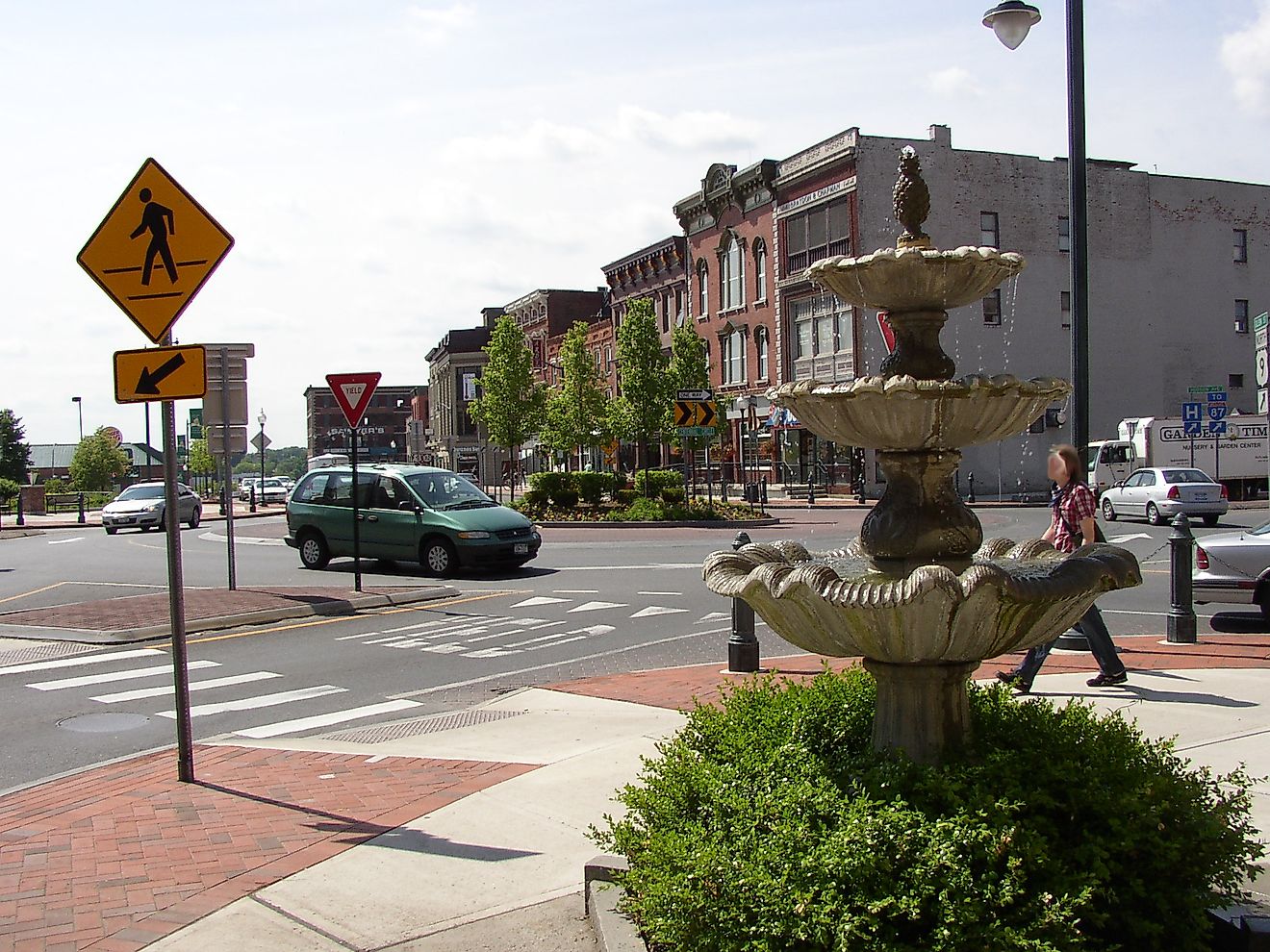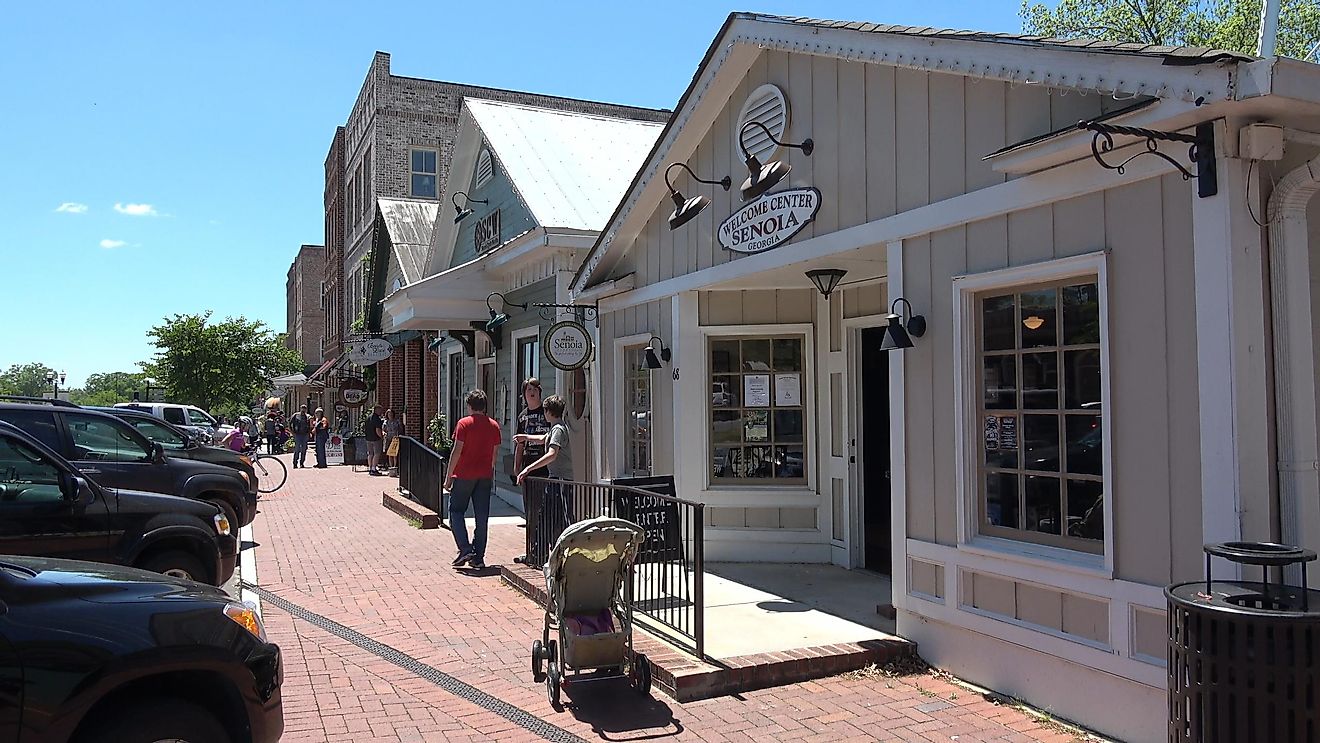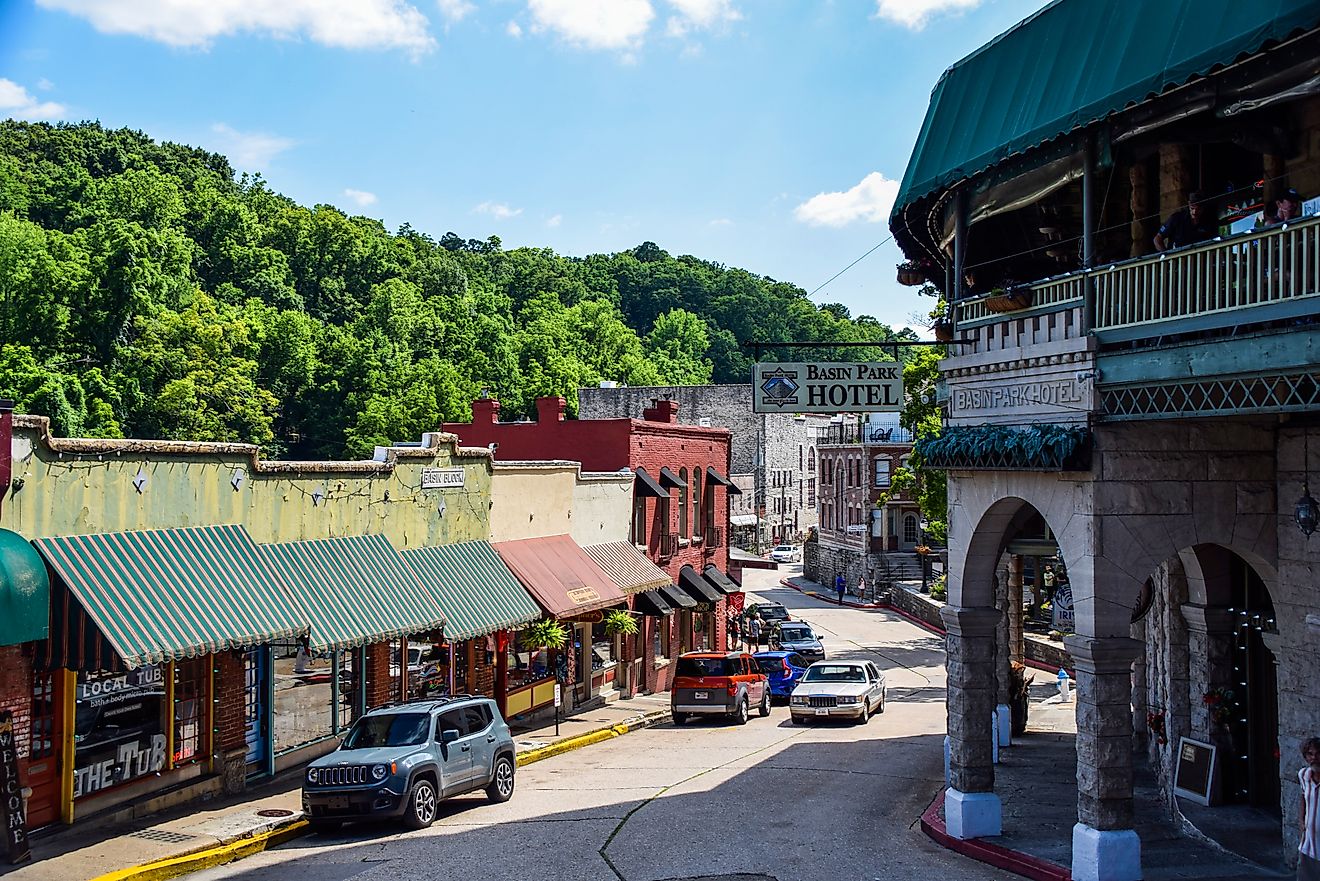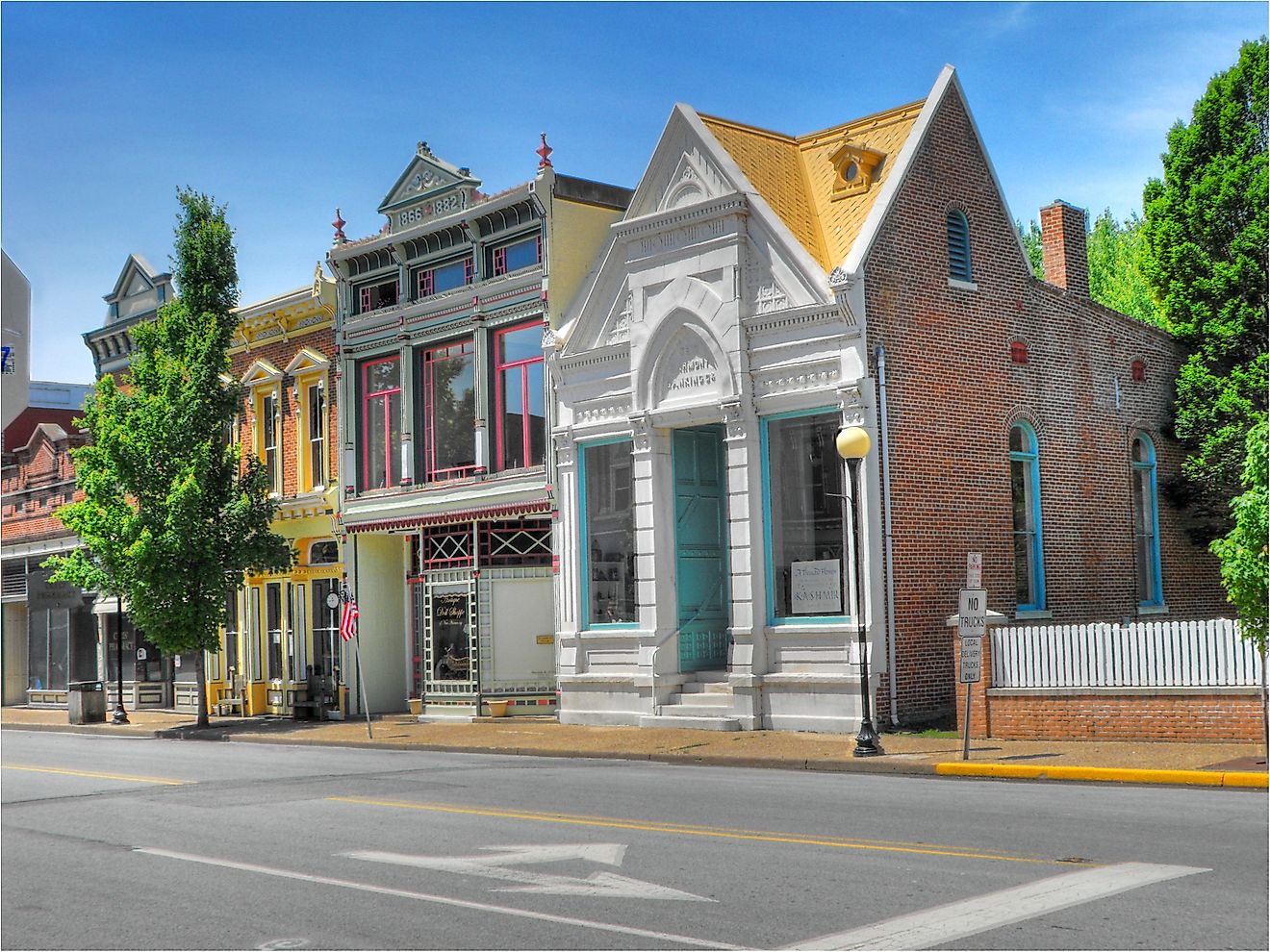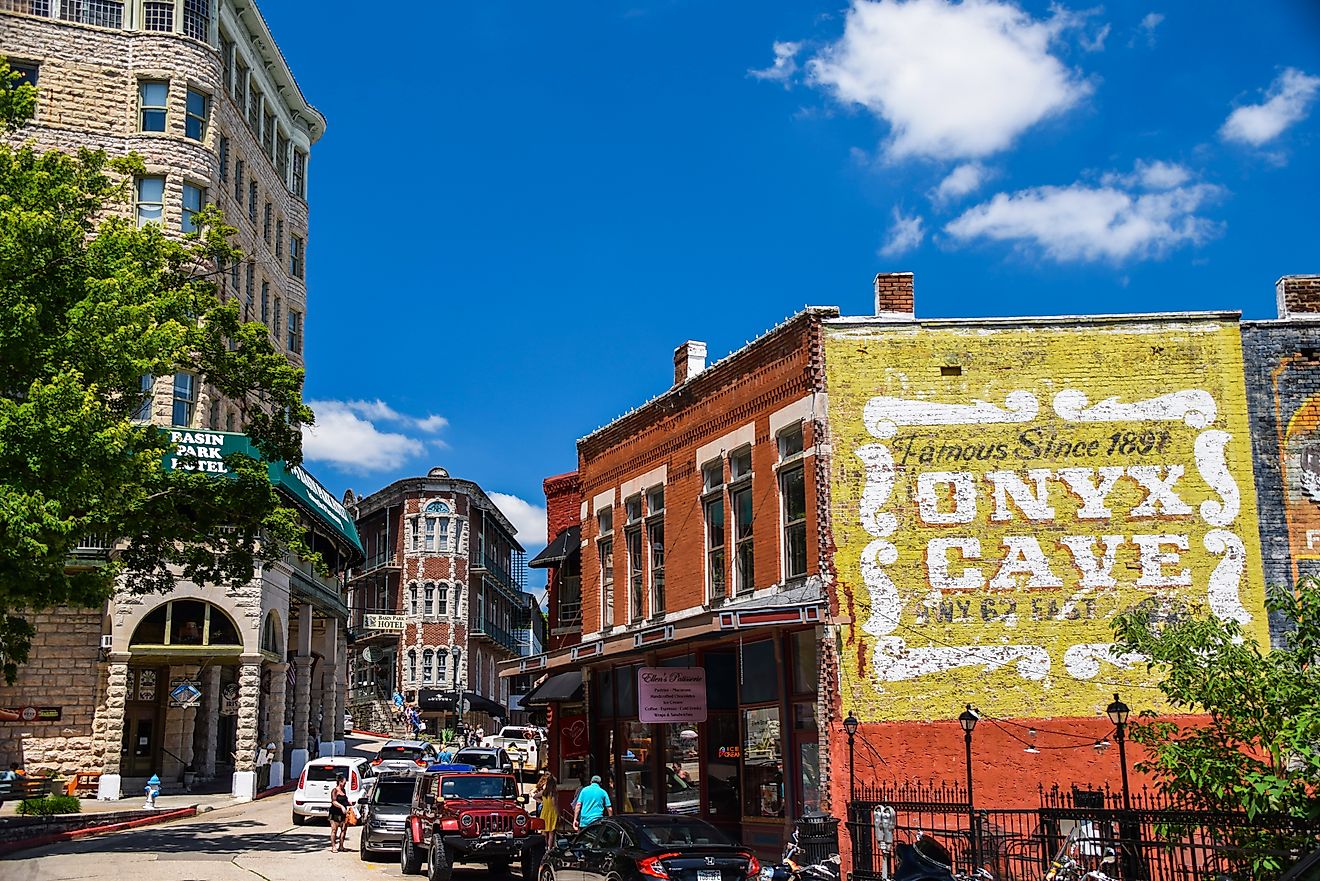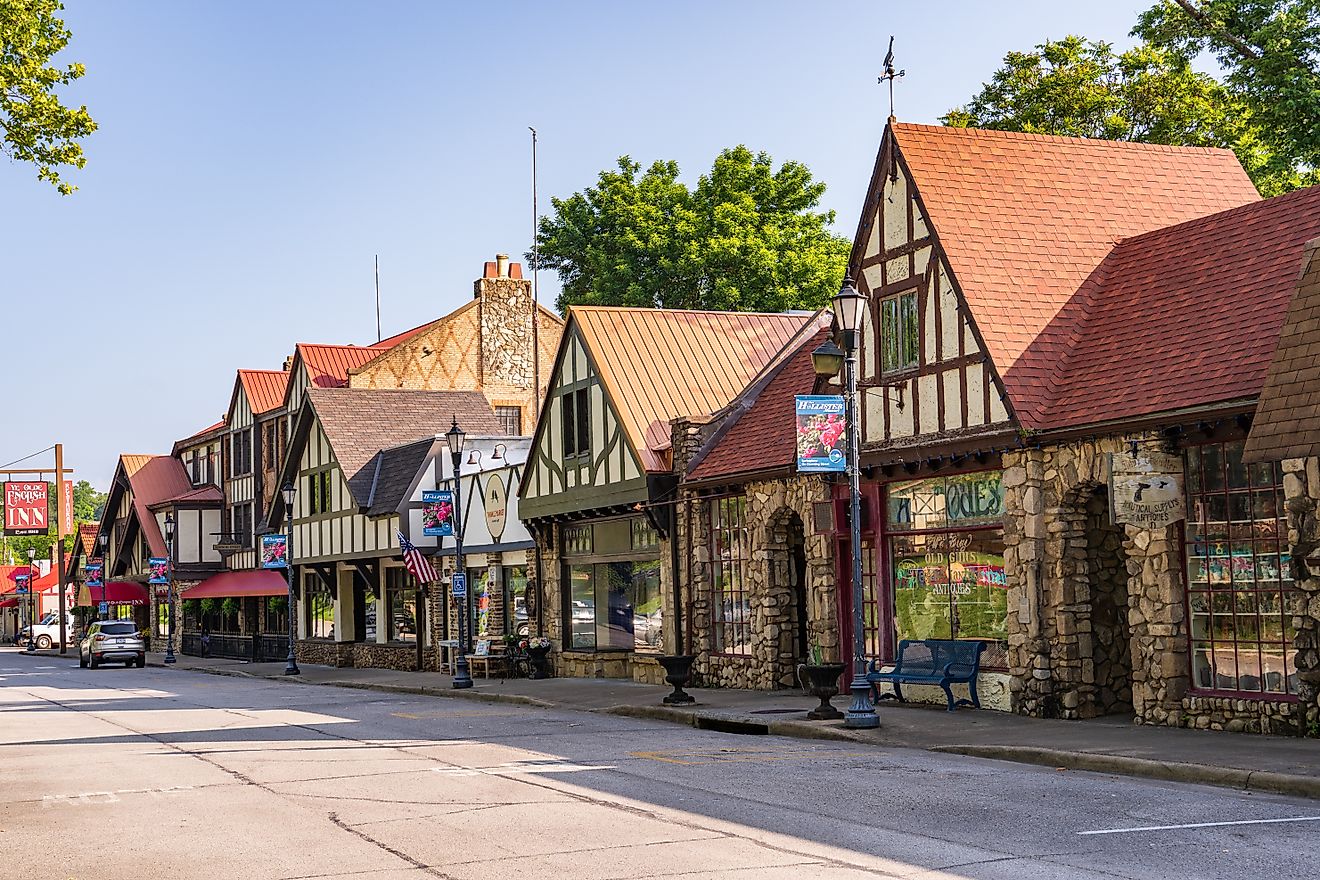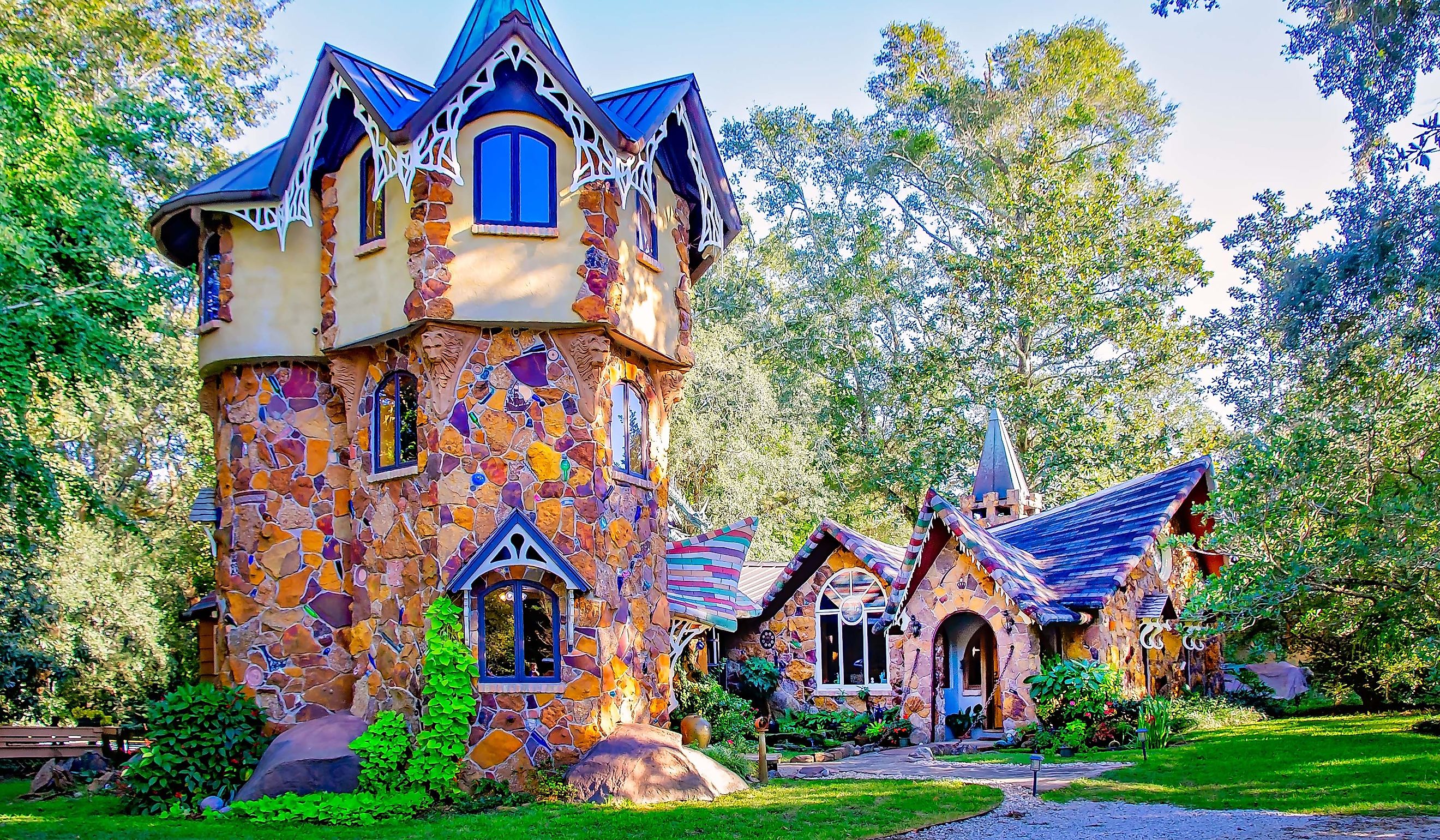
6 Fairy-Tale Small Towns In Alabama
Alabama is not the standard setting for fairy tales. Many such yarns were spun in Europe centuries before the USA's founding, let alone Alabama's. But Europeans unspooled their stories across the Atlantic, which were fashioned into the following 'Bama towns. While they owe much of their whimsy to Europe, these communities have natural fairytalelike features that, in turn, predate colonization by centuries. Traipse through foreign castles and indigenous oaks in the forgotten fairy tale realm of small-town Alabama.
Mountain Brook
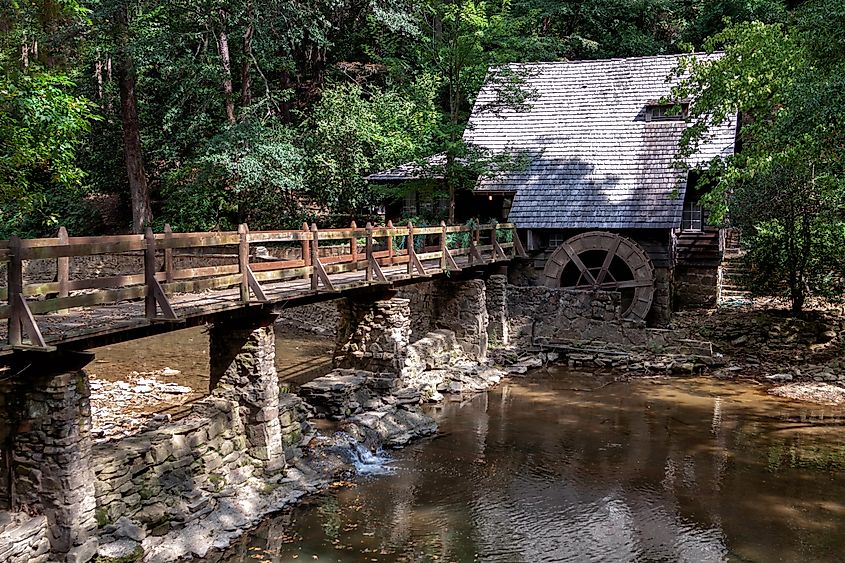
Though considered part of Birmingham, Mountain Brook is a separate and serene city. It houses about 23,000 people across three whimsical villages: Mountain Brook Village, Crestline Village, and English Village. The last of those looks like an English village, complete with medieval-style architecture epitomized by the Continental Bakery near Fairway Drive. Elsewhere in Mountain Brook stands the Old Mill, which is not really a mill but could still fool a Disney princess, as could the Grand Bohemian Mountain Brook, a luxury hotel whose annual Fairy Tale Ball gets filled with costumed characters. If that is not enough whimsy, Mountain Brook is bordered by the Birmingham Zoo and Birmingham Botanical Gardens. Such sprawling sites, combined with urban-sprawl-stopping trees and trails, make Mountain Brook a veritable Narnia for burned-out Birminghamians.
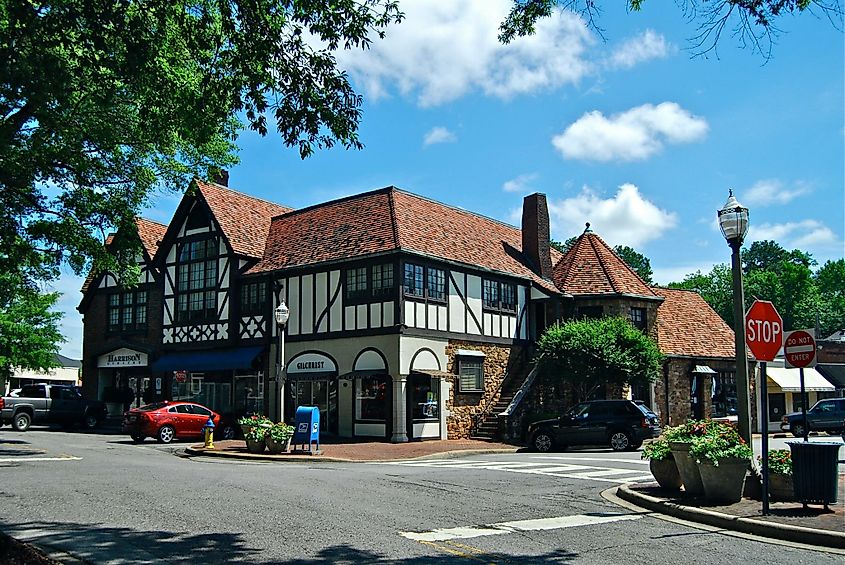
Phil Campbell
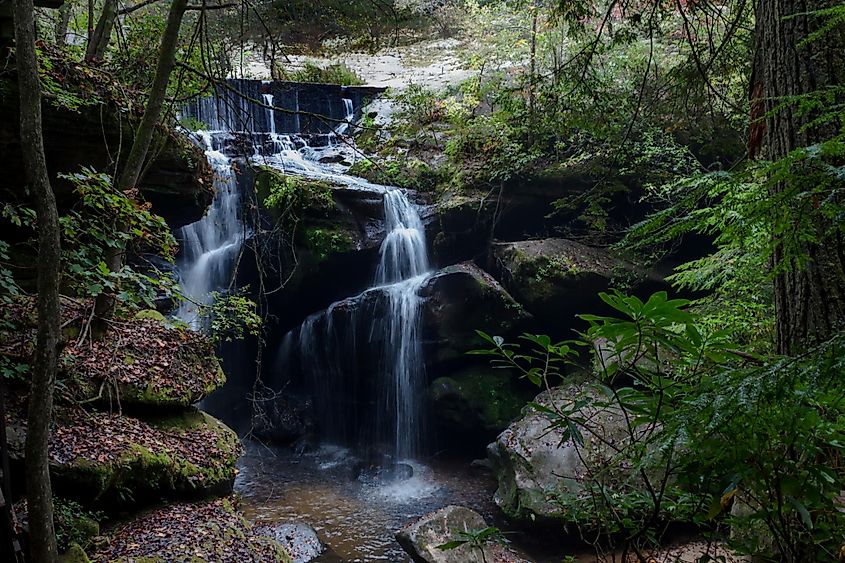
Phil Campbell sounds like an accountant, not one of the fairest towns in Alabama. Yet this oddly named community shines with oddities that look straight out of FernGully. Dubbed "Orfelia fultoni" by scientists, "glowworms" by laymen, and "dismalites" by locals, these larval flies fill Dismals Canyon with a bright, blue glow. They are the only known bioluminescent flies in North America (fireflies are beetles), and Dismals Canyon, which sits west of Phil Campbell proper, is among the few places to find them. It is a privately owned National Natural Landmark, but guided tours are offered after dark when the dismalites are at their brightest. Visitors are also welcome during the day for hikes of the 85-acre property and drinks/snacks at the Old Country Store. If visiting in June, you can pair fantastical worms at Dismals Canyon with fantastical humans at the Phil Campbell Festival, which evolved from the Phil Campbell Convention. Begun by a New York writer named Phil Campbell, the convention gathered Phil Campbells from around the world. See if any Phil Campbells attend the next fest.
Millbrook
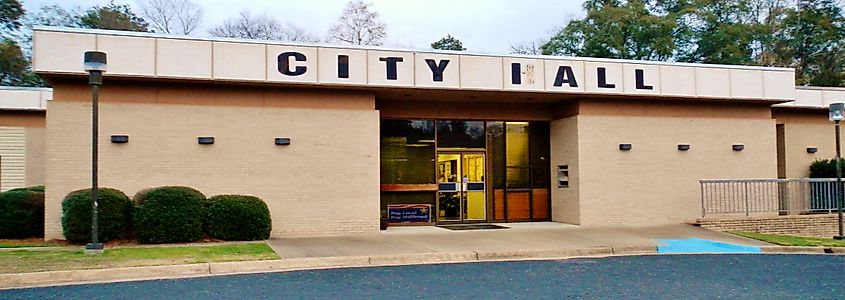
Just south of Millbrook on the Alabama River sits a "town" made for a modern fairy tale. In 2003, Tim Burton needed an idyllic setting for his movie Big Fish, which showcases several Deep South tall tales. He and his staff rented Jackson Lake Island and built the fictional town of Spectre. Storefronts, house facades, and even a church were erected and were supposed to be dismantled after filming. But the island's owners kept Spectre, whose ruins now attract tons of tourists. Although some come strictly because of Big Fish, others come to catch big fish in the surrounding river, camp under Spanish moss, and play with Spectre's only permanent residents: free-range goats who sleep and eat in the church. After exploring the island, you can head back to Millbrook for a different fairy tale at the Millbrook Theatre (a Peter Pan musical is on 2025's schedule), or else keep fishing for Big Fish sights in Wetumpka and Montgomery, two real communities that were additional filming locations.
Magnolia Springs
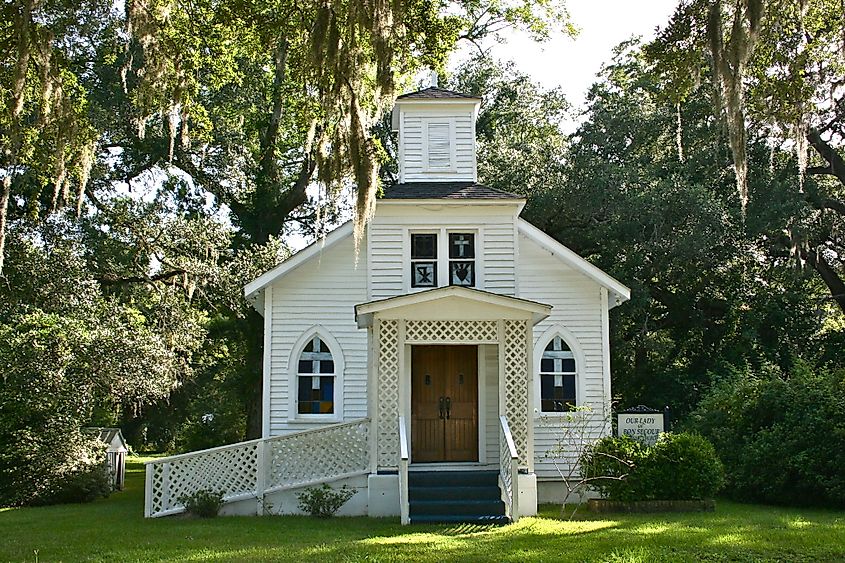
Magnolia trees and the Magnolia River make much magic in Magnolia Springs. Ancient magnolias beautify residential gardens, which are further framed by oaks so lofty they form a Tunnel Of Trees. While traveling the tunnel, stop at the Magnolia Springs Bed and Breakfast and St Paul's Episcopal Chapel for more quaint sights, and then wind your way to the river. Beyond stunning views and endless entertainment, the Magnolia River delivers mail. Waterfront residents are served via the only year-round residential USPS river route in America. If unable to glimpse the storybooklike postmaster in their little boat, head about 20 miles southeast to see another aquatic wonder. The Lady in the Bay (AKA The Lady in the Lake and The Lady in the Marina) sits partially submerged at Barber Marina, whose owner has an affinity for strange sculptures. The Lady's on-land counterparts include dinosaurs, knights, Roman god Neptune and his seahorses, a giant spider, and a replica of Stonehenge.
Montevallo
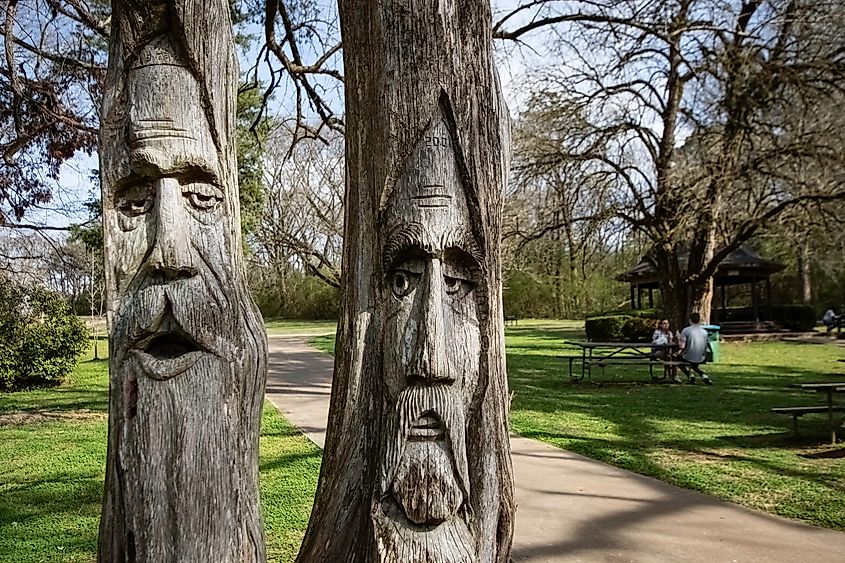
Anthropomorphic trees are staples of fantasy realms. Middle-earth has Ents. Oz has the Fighting Trees. The Forgotten Realms have Treants. And Montevallo has the Tinglewood Carvings. Thanks to a miner-turned-sculptor named Tim Tingle, the trees in Montevallo's Orr Park smile, frown, stick their tongues out, and make various other expressions. Tingle began carving tree faces in 1993 after a storm had damaged the park. Instead of letting the stricken cedars rot, he gave them new life as art installations. Tingle did this in secret until he was caught. Though he expected to be jailed, he was honored and given art blanche to continue. In its 32 years of existence, Tinglewood has comprised not just faces but a wizard, a unicorn, a dragon, and dozens more fantastical figures. It even hosts the Tinglewood Festival, which runs each September and features, what else, but wood carving.
Fairhope
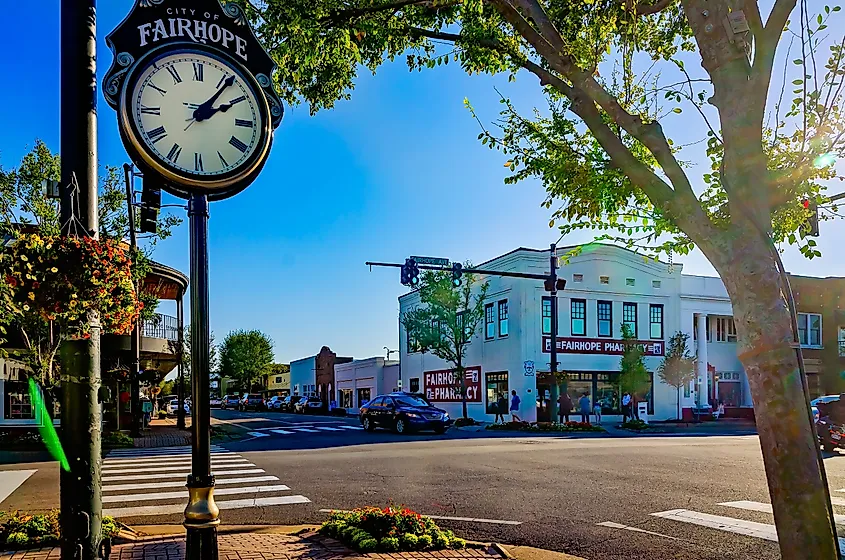
Fairhope was founded on principles that many thought were mere fairy tales. It began in 1894 as a colony under the Georgist Single Tax system, wherein colonists could not own land. Rather, they could lease land for renewable periods of 99 years and own improvements they made to said land. Given the quasi-communal nature of early Fairhope, green space was highly valued. Although the colony was eventually incorporated and the City of Fairhope eventually dominated, the Fairhope Single Tax Corporation still owns about 20 percent of Fairhope and the greenery, though now owned by the City, remains green thanks to an old colony deal. Fairhope thus proved to be no fairy tale. Yet its winsome woods and resident eccentrics, who preserve the Fairhope Storybook Castles and Tolstoy Park, make it feel like one.
There you have it: small-town Alabama rivals the realms of your favorite fairy tales and fantasy stories. You can stroll through a replica English village in Mountain Brook, harness the magic of glowworms in Phil Campbell, see a modern fairy tale set near Millbrook, meet a non-Shyamalan lady in the water near Magnolia Springs, admire anthropomorphic trees in Montevallo, and then retire to storybook castles in Fairhope. Do all that and you might never need fiction again.
